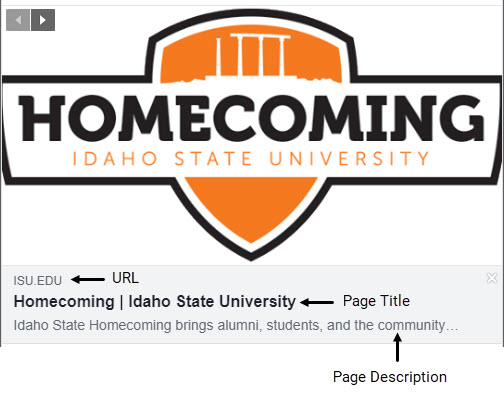Search engine optimization basics
Basic things you can do to improve your site's SEO
Headings
Headings are useful for structure and scannability. They are necessary for accessibility and SEO.
Image Description (alt text)
How to add a description of images you upload. Image descriptions are required to meet accessibility standards and help search engines categorize images.
Writing link text
Link text should tell users what will happen when they click on the link.
SEO Big 3
Metadata is information in HTML tags that tells a search engine about a page.
3 prominent pieces of metadata are:
- URL
- Page Title
- Page Description
They are used in search engine results and social media posts


URL
Understand how URLs are created and how to change the URL of your page.
Page Title
The page title is what is displayed in the tab of the browser. Search engines use the title to categorize the page.
Page Description
A Page Description is a short snippet of text that describes the page's content. It is used by search engines to categorize pages.
Integrate Keywords
Keywords have changed over the years.
Putting a list of keywords on a web page no longer has meaning. Google has been ignoring that kind of keyword usage for years.
Think of keywords as words and phrases that searchers use in their queries.
How to choose keywords
Get in your user's heads
Think about what terms they may be searching. Ask students and others what they words they might use.
Develop long-tail keywords
Long-tails are phrases with some detail. While a long-tail phrase may not be searched frequently, the detail will help those who search for more specific terms.
Example
Keyword: Car
Long-tail: Used 2012 blue 4-door sedan
When you have chosen keywords, use them in paragraphs, headings, image descriptions, page titles, and page descriptions.
Search engines ignore keyword metadata entries.
Do not use keyword fields in Terminalfour. They are not connected to anything and they won't appear on your pages.



